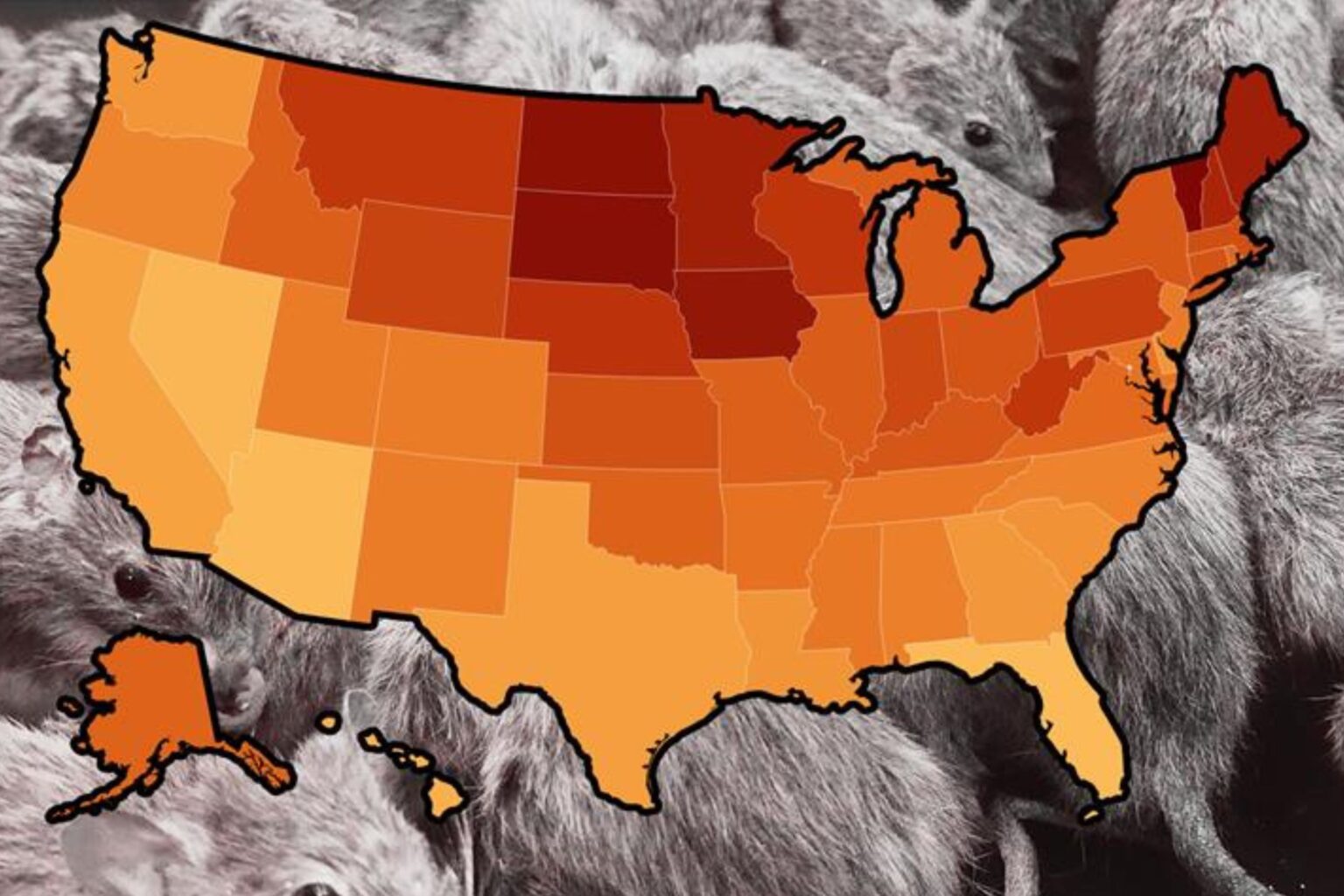More than one in 10 homes (13 percent) in the United States are infested with rodents, with Vermont the most infested state—with nearly one in four homes reporting rodent sightings.
This is according to a analysis by property experts at Eden Emerald Buyers Agent, who warn that rodent infestations can slash up to 10 percent of the value of a home.
The study analyzed state- and county-level statistics from the U.S. Census Bureau’s Small Area Rodent Signs dataset, published last year, which used estimates from the 2019 American Housing Survey. Rodents refer to either mice or rats.
The team evaluated rodent populations across all 50 states, identifying the five most rodent-infested counties in each state. For the county rankings across the entire country, those with less than 100,000 housing units were excluded to avoid an overestimation of rodents in smaller communities.
Vermont’s unforgiving cold winters force rodents to seek shelter in houses when temperatures drop. Homes in Vermont were reported to be crawling with around 241 rodents for every 1,000 homes, followed by South Dakota (232) and North Dakota (229).
Vermont’s Orange County has the highest rodent infestation rates in the state, with 345 homes out of every 1,000 (34.5 percent of homes) reporting signs of rodents. Elsewhere in the state, Essex County followed at 32 percent, while the lowest rodent rates are in Chittenden County, where 17.2 percent of homes are impacted by rodents.
Philadelphia, Pennsylvania, topped the ranking among large counties, with 204,708 rats and mice reported to be roaming around the area, which amounts to 296 per 1,000 homes.
Pennsylvania ranked as the 12th most rodent-infested state overall, with 983,548 rats and mice reported across 5.7 million housing units, averaging 172 rodents per 1,000 homes.
Philadelphia is outranked by two other counties in the state. Fulton County was reported to have 318 rodents for every 1,000 homes, while Susquehanna County was found to have 301 mice and rats per 1,000 housing units.
At the other end of the scale, Florida was found to be America’s least rat-plagued state, with less than 44 rodents per 1,000 housing units. However, nearly a quarter (21 percent) of homes in Lafayette County were reported to still suffer from regular mice and rat raids.
Regionally speaking, the study found that states in the northeast and Midwest are teeming with mice and rats compared to southern regions. States with rural areas in colder climates showed dramatically higher rodent populations, while warmer southern states had far less. Local factors, such as building density, waste management practices and predator populations, play vital roles in determining rodent presence.
“Rodent infestations can cause serious structural damage and create health hazards, potentially slashing property values by 5 to 10 percent in badly affected areas,” said Josh Roth, chief buyers agent at Eden Emerald Buyers Agent.
The agent advised that homebuyers in Vermont should demand property inspections that specifically look for signs of rodent damage. “In rural counties, concentrations can generally be three times higher than the national average of 13.6 percent,” Roth said.
“Something fishy is certainly happening in Philly—America’s rat capital,” he added.
The agent said: “This explains why Philadelphia legislators asked property developers to first implement rat abatement plans before they start building, to prevent them from migrating during demolitions and later stages of construction.”
Do you have a tip on a science story that Newsweek should be covering? Do you have a question about vermin? Let us know via science@newsweek.com.
Read the full article here

